- Home
- Michael Connelly
Short Stories Page 3
Short Stories Read online
Page 3
Lowell looked down at the two envelopes. Bosch believed he had convinced her.
"Where was the bite wound?" she asked.
"On the left forearm. There is a photo in the envelope. We think it might have been a defensive wound, she tried to push the assailant away and he bit her."
She nodded.
"Detective, I'll — "
"Harry."
"Harry. I'll do my best."
"Thank you, Sarah. How long will it take?"
"I won't have anything until at least tomorrow. It will take the rest of the day just to do the sequencing. The profile will go into the computer after that. Probably tomorrow morning. I'll call you as soon as I know something."
Bosch reached into his pocket for a business card and handed it to her.
"My cell's on there. Try it first. And thank you again, Sarah."
Bosch stood up and pushed his chair back into the line. They shook hands and he left.
Once he was back in the car he checked his phone. The call he had ignored had come from Lieutenant Gandle. He waited until he was back on the freeway before returning the call.
"So?" Gandle said.
"We should know something by tomorrow."
"Good. You coming back now?"
"On my way. What's going on down there?"
"For one thing, we had a tech take a look at the AC unit. Your hunch was right on. The AC is fine, but somebody had gone into the garage and thrown the circuit breaker. That's why it wasn't working."
"Did anyone ask Mr. Gaston if — "
"Yes, we did. The side door to the garage was often left unlocked. The guy had access."
Bosch thought about this. The fact that the AC had been tampered with meant the perpetrator had not picked the Gaston house randomly in the night. The intrusion had been planned. He had probably seen Brittany or her sister somewhere, followed her home and then formulated a plan. Shut down the AC and then sit back and see if a window would be left open that night. It showed a certain amount of cunning and organization, but it also gave them a lead. Any public place where the victim and her sister could have crossed paths with a predator. There might be witnesses who saw the guy watching. There might be cameras.
"Any prints on the circuit switch?" he asked.
"Wiped clean. Just like the screen and the window. This guy's too smart to make that kind of mistake."
"If we get a match on the DNA we won't need prints."
They talked over a few other details of the investigation and then Bosch signed off. For the next five hours he worked the case in his head as he drove. The car's air-conditioner lost the battle against the heat of the day and Bosch stripped off his tie and his jacket. When his phone buzzed he almost missed the call trying to pull it out of the jacket on the seat next to him.
"Detective, it's Sarah Lowell at the DOJ lab."
"I didn't think I'd be hearing from you till tomorrow."
"Yes, well, I'm afraid I have bad news. I thought you should know right away."
"Go ahead."
"I did the preliminary screening and sequencing of the swabs you gave me. Histamine levels allowed me to isolate the saliva in the wound. I ran the sequence and it turned out to be her own DNA. It has all the same markers from the swab from her mouth. Is there any chance that you brought me the wrong swab?"
"No, I watched them collect it, seal it and mark it. It's right."
"Then the only thing I can think of is that she bit herself."
"Did you look at the photo of the wound, Sarah?"
"Yes, I did."
"Look at it again. The bite was deep. It was along the outside of her forearm, cresting the top and bottom. I guess it's possible to bite yourself there but hardly likely while fighting for your life."
"Then I don't know what to tell you, Detective. But those are my findings. I stopped the sequence."
Bosch's mind raced through the possibilities and hit something new head on.
"They were twins," he said. "Did I tell you that? The victim and her sister were twins. Does that mean they share the same DNA?"
There was a long pause before Lowell answered.
"No, they would not have the same DNA," she said. "That's urban myth."
Bosch shook his head in defeat. He couldn't explain this.
"But they would appear to in our profiling," Lowell said.
"What do you mean?"
"Twins do not share the exact same DNA. But it is very close. In terms of the DNA profiling we do in accordance with the FBI's CODIS database, we look for thirteen specific markers plus the Amel marker that shows us gender. These fourteen markers would not differentiate between twins. It would take a deeper profile. You'd have to go to several other markers."
"Can you do that?"
"Yes."
"Then do it, Sarah, and call me when you have the results."
Bosch ended the call and immediately called Lt. Gandle back.
"It was the sister," he said.
"What?"
"One twin killed the other. The DNA is going to prove it."
"Are you kidding me?"
"No, the sister did it and then the mother and father helped cover it. They made up the whole thing about the air-conditioner. They made it look like an intruder."
"Why would the sister do this? Why would the parents cover it up?"
"I don't know yet, Lieutenant. The parents said something about them sharing everything, even boyfriends sometimes. Maybe one of them got tired of sharing. And the parents? They were protecting the one kid they have left."
"And the DNA proves this?"
"Not yet, but it will. Get the interview rooms ready. We bring in mother, father and daughter and separate them. One of them will spill. I'll be there in an hour. I want the daughter. I'll talk to her."
"Okay, you got it. We'll set it up and bring them in."
Bosch closed the phone. He put his foot down on the pedal and picked up his speed. The barren land that fronted the freeway went by him in a blur. He was thinking about the reasons people kill each other.
A FINE MIST OF BLOOD
The DNA hits came in the mail, in yellow envelopes from the regional crime lab’s genetics unit. Fingerprint matches were less formal; notification usually came by e-mail. Case-to-case data hits were rare birds and were handled in yet a different manner — direct contact between the synthesizer and the submitting investigator.
Harry Bosch had a day off and was in the waiting area outside the school principal’s office when he got the call. More like a half a day off. His plan was to head downtown to the PAB after dealing with the summons from the school’s high command.
The buzzing of his phone brought an immediate response from the woman behind the gateway desk.
“There’s no cell phones in here,” she said.
“I’m not a student,” Bosch said, stating the obvious as he pulled the offending instrument from his pocket.
“Doesn’t matter. There’s no cell phones in here.”
“I’ll take it outside.”
“I won’t come out to find you. If you miss your appointment then you’ll have to reschedule, and your daughter’s situation won’t be resolved.”
“I’ll risk it. I’ll just be in the hallway, okay?”
He pushed through the door into the hallway as he connected to the call. The hallway was quiet, as it was the middle of the fourth period. The ID on the screen had said simply LAPD data but that had been enough to give Bosch a stirring of excitement.
The call was from a tech named Malek Pran. Bosch had never dealt with him and had to ask him to repeat his name twice. Pran was from Data Evaluation and Theory — known internally as the DEATH squad — which was part of a new effort by the Open-Unsolved Unit to clear cases through what was called data synthesizing.
For the past three years the DEATH squad had been digitizing archived murder books — the hard-copy investigative records — of unsolved cases, creating a massive database of easily accessible and compar
able information on unsolved crimes. Suspects, witnesses, weapons, locations, word constructions — anything that an investigator thought important enough to note in an investigative record was now digitized and could be compared with other cases.
The project had actually been initiated simply to create space. The city’s records archives were bursting at the seams with acres of files and file boxes. Shifting it all to digital would make room in the cramped department.
Pran said he had a case-to-case hit. A witness listed in a cold case Bosch had submitted for synthesizing had come up in another case, also a homicide, as a witness once again. Her name was Diane Gables. Bosch’s case was from 1999 and the second case was from 2007, which was too recent to fall under the purview of the Open-Unsolved Unit.
“Who submitted the 2007 case?”
“Uh, it was out of Hollywood Division. Detective Jerry Edgar made the submission.”
Bosch almost smiled in the hallway. He went a distance back with Jerry Edgar.
“Have you talked to Edgar yet about the hit?” Bosch asked.
“No. I started with you. Do you want his contact info?”
“I already have it. What’s the vic’s name on that case?”
“Raymond Randolph, DOB six, six, sixty-one — that’s a lot of sixes. DOD July second, 2007.”
“Okay, I’ll get the rest from Edgar. You did good, Pran. This gives me something I can work with.”
Bosch disconnected and went back into the principal’s office. He had not missed his appointment. He checked his watch. He’d give it fifteen minutes, and then he’d have to start moving on the case. His daughter would have to go without her confiscated cell phone until he could get another appointment with the principal.
* * *
Before contacting Jerry Edgar at Hollywood Division, Bosch pulled up the files — both hard and digital — on his own case. It involved the murder of a precious-metals swindler named Roy Alan McIntyre. He had sold gold futures by phone and internet. It was the oldest story in the book: There was no gold, or not enough of it. It was a Ponzi scheme through and through and like all of them, it finally collapsed upon itself. The victims lost tens of millions. McIntyre was arrested as the mastermind, but the evidence was tenuous. A good lawyer came to his defense and was able to convince the media that McIntyre was a victim himself, a dupe for organized-crime elements that had pulled the strings on the scheme. The DA started floating a deal that would put McIntyre on probation — provided he cooperated and returned all the money he still had access to. But word leaked about the impending deal, and hundreds of the scam’s victims organized to oppose it. Before the whole thing went to court, McIntyre was murdered in the garage under the Westwood condominium tower where he lived. Shot once between the eyes, his body found on the concrete next to the open door of his car.
The crime scene was clean; not even a shell casing from the nine-millimeter bullet that had killed him was recovered. The investigators had no physical evidence and a list of possible suspects that numbered in the hundreds. The killing looked like a hit. It could have been McIntyre’s unsavory backers in the gold scam or it could have been any of the investors who’d gotten ripped off. The only bright spot was that there was a witness. She was Diane Gables, a twenty-nine-year-old stockbroker who happened to be driving by McIntyre’s condo on her way home from work. She’d reported seeing a man wearing a ski mask and carrying a gun at his side run from the garage and jump into the passenger seat of a black SUV waiting in front. Panicked by the sight of the gun, she didn’t get an exact make or model of the SUV or its license-plate number. She’d pulled to the side of the road rather than following the vehicle as it sped off.
Bosch had not interviewed Gables when he had reevaluated the case in the Open-Unsolved Unit. He had simply reviewed the file and submitted it to the DEATH squad. Now, of course, he would be talking to her.
He picked the phone up and dialed a number from memory. Jerry Edgar was at his desk.
“It’s me — Bosch. Looks like we’re going to be working together again.”
“Sounds good to me, Harry. What’ve you got?”
* * *
Diane Gables’s current address, obtained through the DMV, was in Studio City. Edgar drove while Bosch looked through the file on the 2007 case. It involved the murder of a man who had been awaiting trial for raping a seventeen-year-old girl who had knocked on his door to sell him candy bars as part of a fundraiser for a school trip to Washington, DC.
As Bosch read through the murder book, he remembered the case. It had been in the news because the circumstances suggested it had been a crime of vigilante justice by someone who was not willing to wait for Raymond Randolph to go on trial. Randolph was intending to mount a defense that would acknowledge that he’d had sexual intercourse with the girl but state that it was consensual. He planned to claim that the victim offered him sex in exchange for his buying her whole carton of candy bars.
The forty-six-year-old Randolph was found in the single-car garage behind his bungalow on Orange Grove, south of Sunset. He had been on his knees when he was shot twice in the back of the head.
The crime scene was clean, but it was a hot day in July and a neighbor who had her windows open because of a broken air conditioner heard the two shots, followed by the high-revving and rapid departure of a vehicle in the street. She called 911, which brought a near-immediate response from the police at Hollywood Station three blocks away and also served to peg the time of the murder almost to the minute.
Jerry Edgar was the lead investigator on the case. While obvious suspicion focused on the family and friends of the rape victim, Edgar cast a wide net — Bosch took some pride in seeing that — and in doing so came across Diane Gables. Two blocks from the Randolph home was an intersection controlled by a traffic signal and equipped with a camera that photographed vehicles that ran the red light. The camera took a double photo — one shot of the vehicle’s license plate, and one shot of the person behind the wheel. This was done so that when the traffic citation was sent to the vehicle’s owner, he or she could determine who’d been behind the wheel when the infraction occurred.
Diane Gables was photographed in her Lexus driving through the red light in the same minute as the 911 call reporting the gunshots was made. The photograph and registration was obtained from the DMV the day after the murder and Gables, now thirty-seven, was interviewed by Edgar and his partner, Detective Manuel Soto. She was then dismissed as both a possible suspect and a witness.
“So, how well do you remember this interview?” Bosch asked.
“I remember it because she was a real looker,” Edgar said. “You always remember the lookers.”
“According to the book, you interviewed her and dropped her. How come? Why so fast?”
“She and her story checked out. Keep going. It’s in there.”
Bosch found the interview summary and scanned it. Gables had told Edgar and Soto that she had been cruising through the neighborhood after filling out a crime report at the nearby Hollywood Station on Wilcox. Her Lexus had been damaged by a hit-and-run driver the night before while parked on the street outside a restaurant on Franklin. In order to apply for insurance coverage on the repairs, she had to file a police report. After stopping at the station, she was running late for work and went through the light on what she was thought was a yellow signal. The camera said otherwise.
“So she had filed the report?” Bosch asked.
“She had indeed. She checked out. And that’s what makes me think we’re dealing with just a coincidence here, Harry.”
Bosch nodded but continued to grind it down inside. He didn’t like coincidences. He didn’t believe in them.
“You checked her work too?”
“Soto did. Confirmed her position and that she was indeed late to work on the day of the killing. She had called ahead and said she was running late because she had been at the police station. She called her boss.”
“What about the restaurant? I d
on’t see it in here.”
“Then I probably didn’t have that information.”
“So you never checked it.”
“You mean did I check to see if she ate there the night before the murder? No, Harry, I didn’t and that’s a bullshit question. She was —”
“It’s just that if she was setting up a cover story, she could’ve crunched her own car and —”
“Come on, Harry. You’re kidding me, right?”
“I don’t know. We’re still going to talk to her.”
“I know that, Harry. I’ve known that since you called. You’re going to have to see for yourself. Just like always. So just tell me how you want to go in, rattlesnake or cobra?”
Bosch considered for a moment, remembering the code they’d used back when they were partners. A rattlesnake interview was when you shook your tail and hissed. It was confrontational and useful for getting immediate reactions. Going cobra was the quiet approach. You’d slowly move in, get close, and then strike.
“Let’s go cobra.”
“You got it.”
* * *
Diane Gables wasn’t home. They had timed their arrival for 5:30 p.m., figuring that with the stock market closing at 1:00 p.m., Gables would easily have finished work for the day.
“What do you want to do?” Edgar said as they stood at the door.
“Go back to the car. Wait awhile.”
Back in the car, they talked about old cases and detective bureau pranks. Edgar revealed that it had been he who had cut ads for penile-enhancement surgery out of the sports pages and slipped them into an officious lieutenant’s jacket pocket while it had been hanging on a rack in his office. The lieutenant had subsequently mounted an investigation focused squarely on Bosch.
“Now you tell me,” Bosch said. “Pounds tried to bust me to burglary for that one.”
Edgar was a clapper. He backed his laughter with his own applause but cut the display short when Bosch pointed through the windshield.

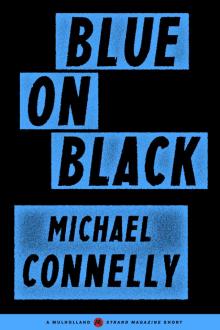 Blue on Black
Blue on Black The Black Ice (1993)
The Black Ice (1993) Crime Beat: A Decade of Covering Cops and Killers
Crime Beat: A Decade of Covering Cops and Killers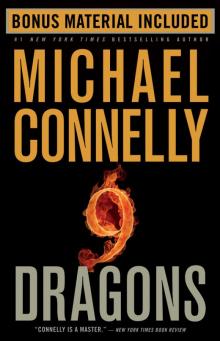 Nine Dragons
Nine Dragons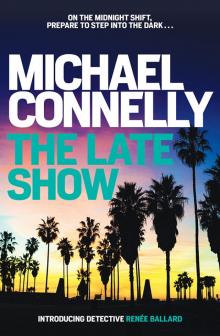 The Late Show
The Late Show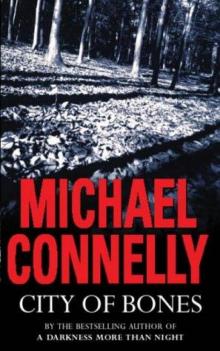 City of Bones
City of Bones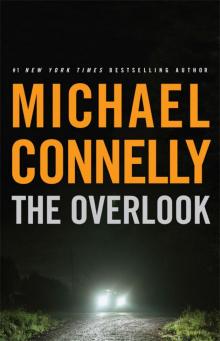 The Overlook
The Overlook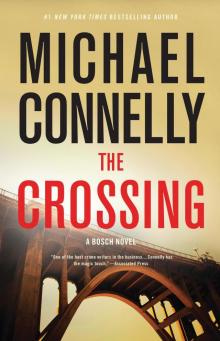 The Crossing
The Crossing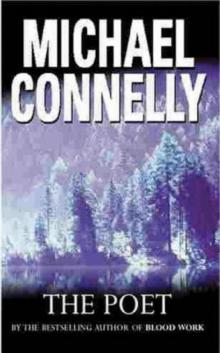 The Poet (1995)
The Poet (1995) Murder Worthy
Murder Worthy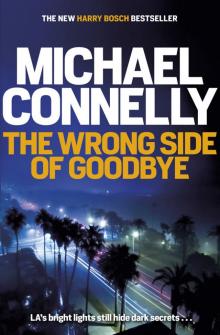 The Wrong Side of Goodbye
The Wrong Side of Goodbye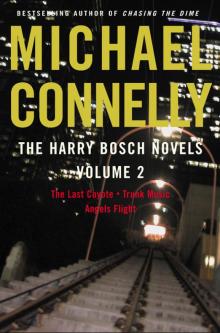 Harry Bosch Novels, The: Volume 2
Harry Bosch Novels, The: Volume 2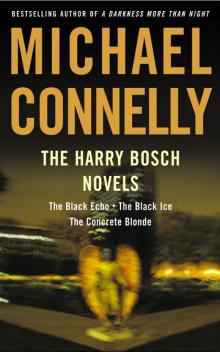 The Harry Bosch Novels
The Harry Bosch Novels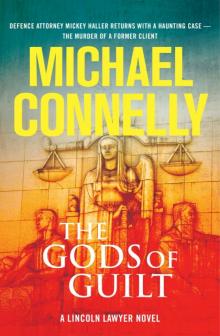 The Gods of Guilt
The Gods of Guilt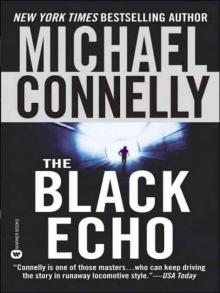 The Black Echo
The Black Echo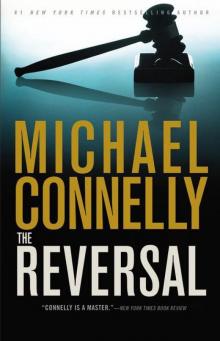 The Reversal
The Reversal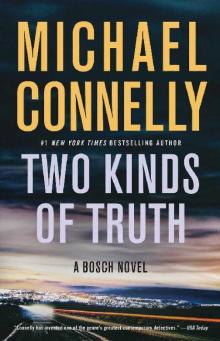 Two Kinds of Truth
Two Kinds of Truth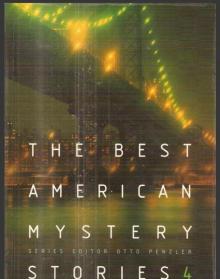 The Best American Mystery Stories 2003
The Best American Mystery Stories 2003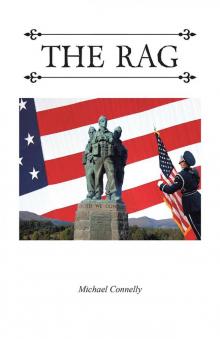 The Rag
The Rag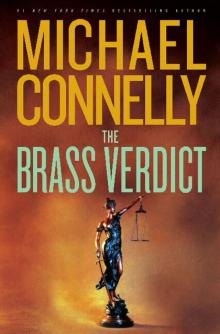 The Brass Verdict
The Brass Verdict The Black Echo (1992)
The Black Echo (1992)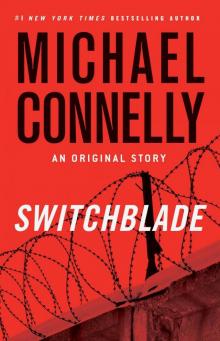 Switchblade
Switchblade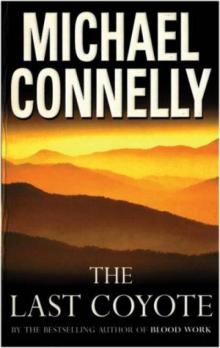 The Last Coyote
The Last Coyote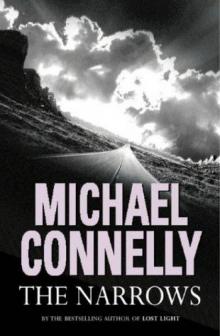 The Narrows
The Narrows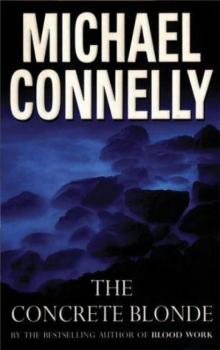 The Concrete Blonde (1994)
The Concrete Blonde (1994)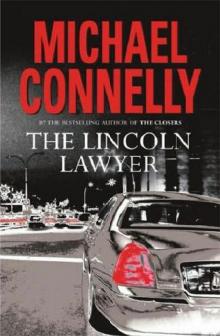 THE LINCOLN LAWYER (2005)
THE LINCOLN LAWYER (2005)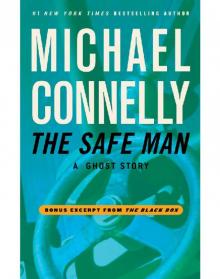 The Safe Man: A Ghost Story
The Safe Man: A Ghost Story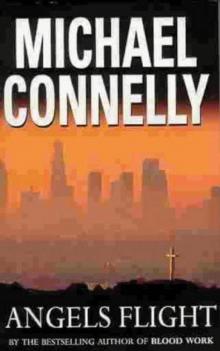 Angels Flight (1998)
Angels Flight (1998) Void Moon
Void Moon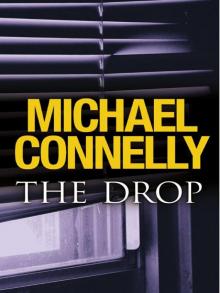 The Drop
The Drop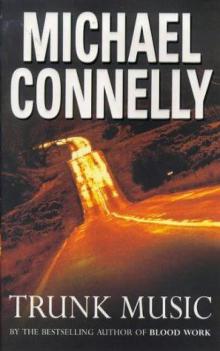 Trunk Music
Trunk Music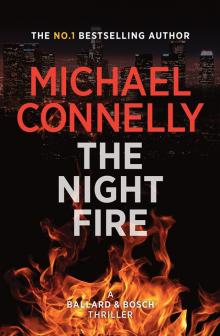 The Night Fire
The Night Fire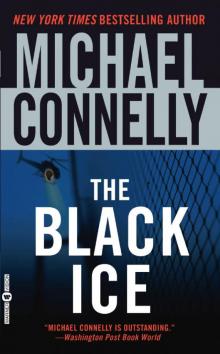 The Black Ice
The Black Ice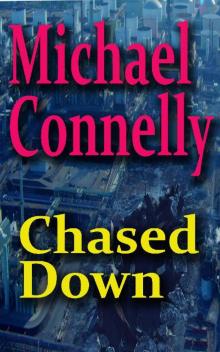 Chased Down
Chased Down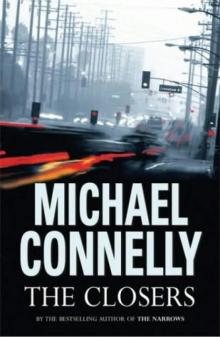 The Closers
The Closers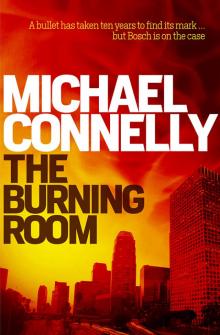 The Burning Room
The Burning Room Angels Flight
Angels Flight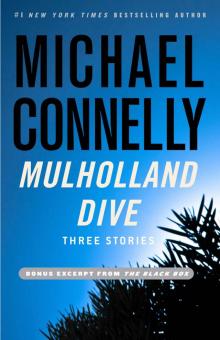 SSC (2012) Mulholland Drive
SSC (2012) Mulholland Drive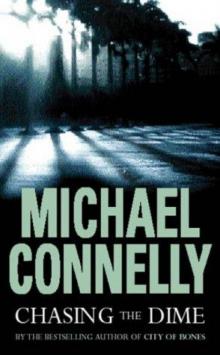 Chasing the Dime
Chasing the Dime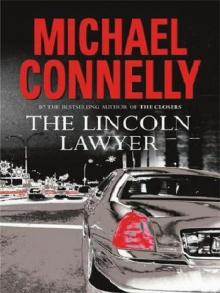 The Lincoln Lawyer
The Lincoln Lawyer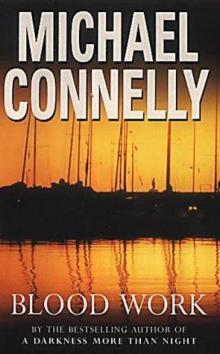 Blood Work (1998)
Blood Work (1998)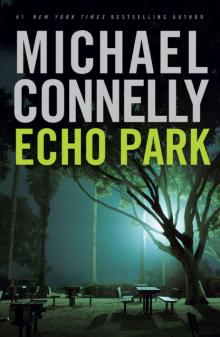 Echo Park
Echo Park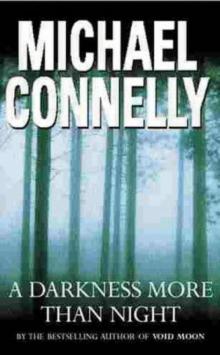 A Darkness More Than Night
A Darkness More Than Night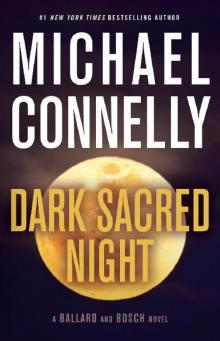 Dark Sacred Night - Ballard and Bosch #1;Renée Ballard #2
Dark Sacred Night - Ballard and Bosch #1;Renée Ballard #2 Lost Light
Lost Light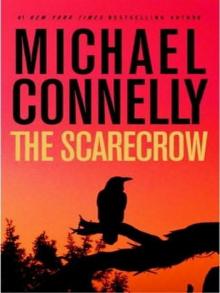 The Scarecrow
The Scarecrow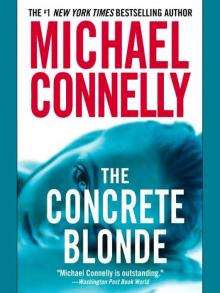 The Concrete Blonde
The Concrete Blonde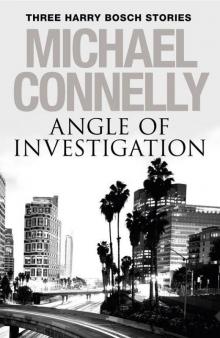 Angle of Investigation
Angle of Investigation Suicide Run: Three Harry Bosch Stories
Suicide Run: Three Harry Bosch Stories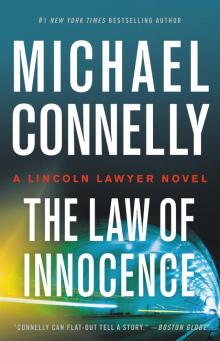 The Law of Innocence
The Law of Innocence Murder in Vegas: New Crime Tales of Gambling and Desperation
Murder in Vegas: New Crime Tales of Gambling and Desperation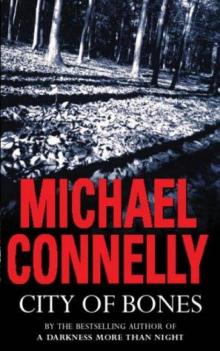 City Of Bones (2002)
City Of Bones (2002)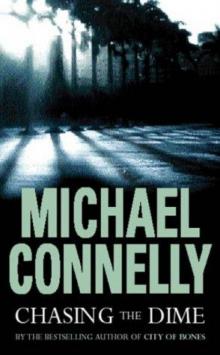 Chasing the Dime (2002)
Chasing the Dime (2002)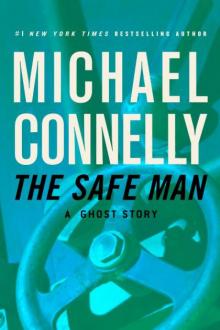 The Safe Man
The Safe Man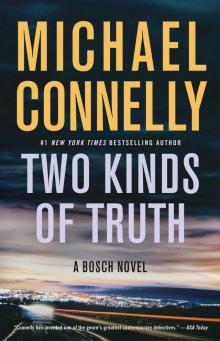 Two Kinds of Truth (A Harry Bosch Novel)
Two Kinds of Truth (A Harry Bosch Novel)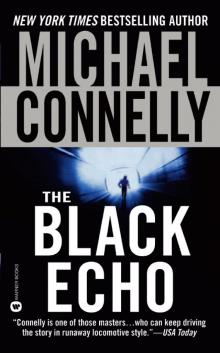 Harry Bosch 01 - The Black Echo
Harry Bosch 01 - The Black Echo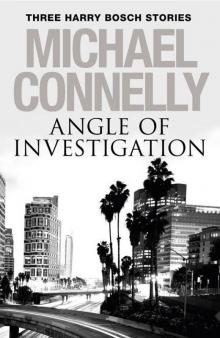 Angle of Investigation: Three Harry Bosch Short Stories
Angle of Investigation: Three Harry Bosch Short Stories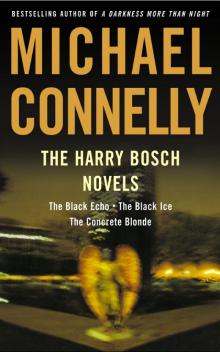 The Harry Bosch Novels Box Set 1
The Harry Bosch Novels Box Set 1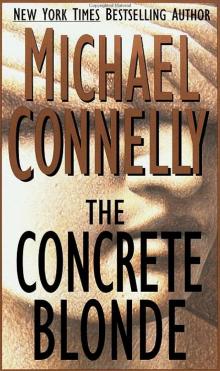 The Concrete Blonde hb-3
The Concrete Blonde hb-3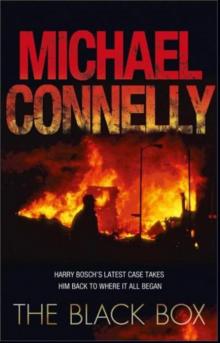 The Black Box hb-18
The Black Box hb-18 Short Stories
Short Stories The Black Ice hb-2
The Black Ice hb-2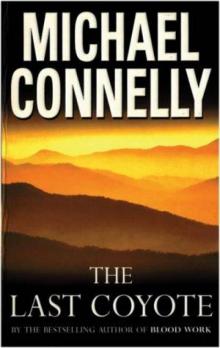 The Last Coyote (1995)
The Last Coyote (1995)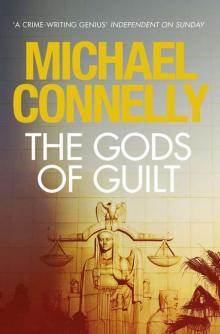 The Gods of Guilt mh-5
The Gods of Guilt mh-5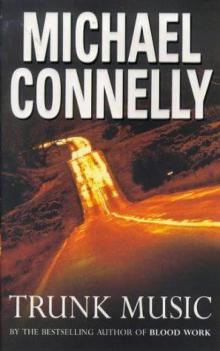 Trunk Music (1996)
Trunk Music (1996)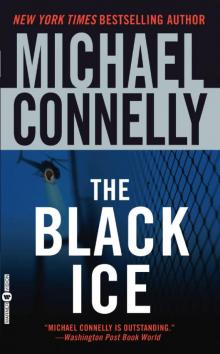 Harry Bosch 02 - The Black Ice
Harry Bosch 02 - The Black Ice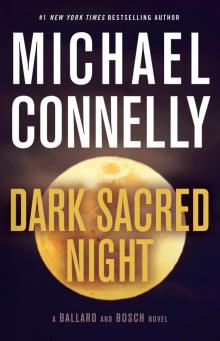 Dark Sacred Night
Dark Sacred Night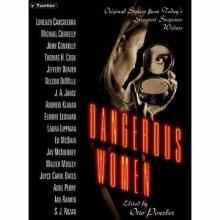 Cielo Azul
Cielo Azul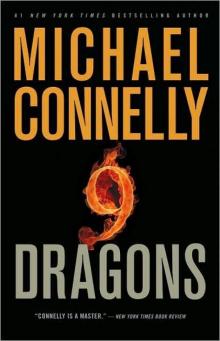 9 Dragons
9 Dragons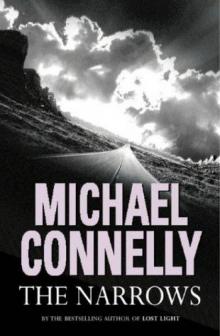 The Narrows (2004)
The Narrows (2004)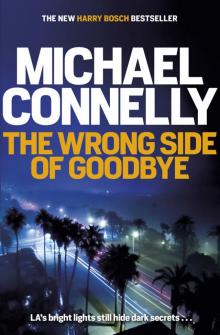 The Wrong Side of Goodbye (Harry Bosch Series)
The Wrong Side of Goodbye (Harry Bosch Series)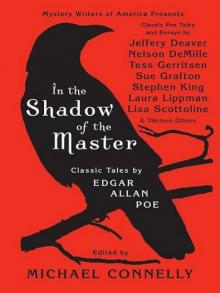 In The Shadow Of The Master: Classic Tales by Edgar Allan Poe
In The Shadow Of The Master: Classic Tales by Edgar Allan Poe Void Moon (1999)
Void Moon (1999)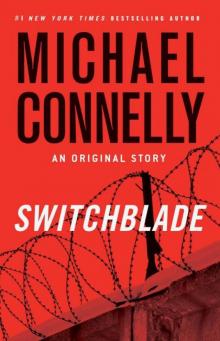 Switchblade: An Original Story (harry bosch)
Switchblade: An Original Story (harry bosch) The Harry Bosch Novels, Volume 2
The Harry Bosch Novels, Volume 2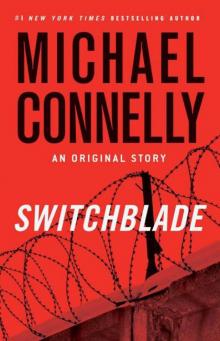 Switchblade: An Original Story
Switchblade: An Original Story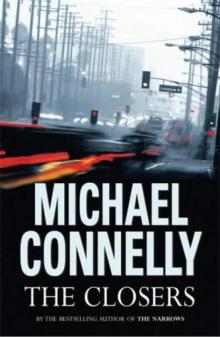 The Closers (2005)
The Closers (2005)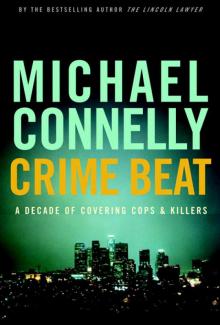 Crime Beat
Crime Beat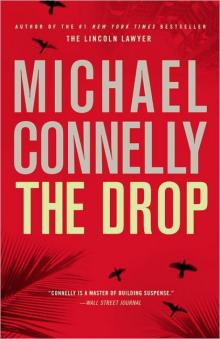 The Drop hb-17
The Drop hb-17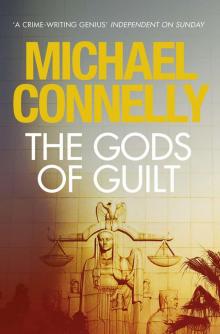 The Gods of Guilt (Mickey Haller 5)
The Gods of Guilt (Mickey Haller 5)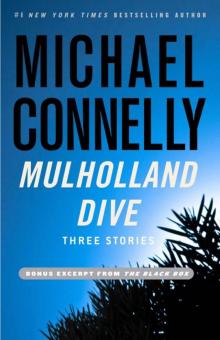 Mulholland Dive: Three Stories
Mulholland Dive: Three Stories Lost Light (2003)
Lost Light (2003)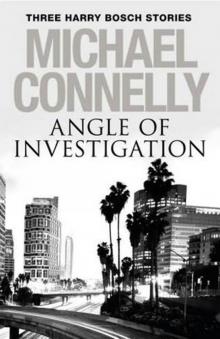 Angle of Investigation: Three Harry Bosch Stories
Angle of Investigation: Three Harry Bosch Stories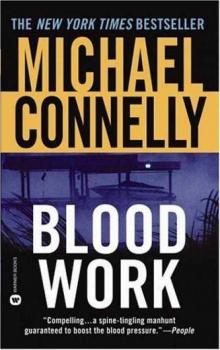 Blood Work
Blood Work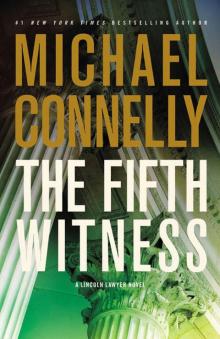 The Fifth Witness: A Novel
The Fifth Witness: A Novel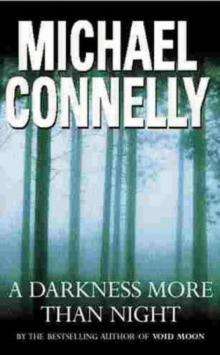 A Darkness More Than Night (2000)
A Darkness More Than Night (2000)